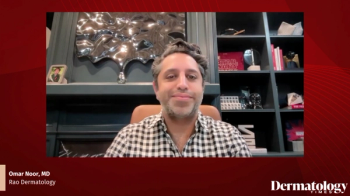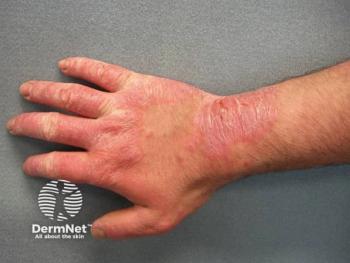
Three A’s Framework Offers Practical SDOH Solutions
Key Takeaways
- Addressing SDOH is crucial in pediatric dermatology, impacting treatment outcomes for underserved children more than clinical encounters.
- Economic challenges, such as Medicaid not covering emollients, necessitate cost-effective treatment options and consideration of discount store memberships.
Coates addresses social determinants of health in pediatric dermatology, emphasizing their impact on treatment and patient outcomes.
At the
Opening with a representative case from her pediatric dermatology clinic at San Francisco’s county hospital, Coates described a 10-month-old patient with severe eczema whose family was navigating homelessness, limited access to hygiene facilities, and frequent emergency department visits. “They don’t have access to privacy, a bathtub or laundry,” she noted, underscoring how structural barriers directly impact treatment effectiveness.
Coates framed the discussion around 5 key SDOH domains: health care access and quality, education access and quality, social and community context, neighborhood and built environment, and economic stability. These, she stressed, are often more influential on health outcomes than any single clinical encounter.
Highlighting the concept of Adverse Childhood Experiences (ACEs), Coates cited data showing that nearly 61% of adults in the US have experienced at least 1 ACE, with 17% reporting 4 or more.2 “Many adult diseases can be viewed as occurring as a result of these ACEs,” she said. In dermatology, she noted a clear correlation: higher ACE scores are associated with increased prevalence and severity of atopic dermatitis in children.
Economic burden was another focal point. Many families struggle to afford basic eczema treatments, as Medicaid often doesn’t cover emollients. Coates urged clinicians to consider cost-effective options and to ask families about discount store memberships like Costco or Sam’s Club, which can drastically reduce product costs. “They really appreciate when you acknowledge that,” she added.
Health literacy, another barrier to care, is especially relevant in dermatology. Only 12% of US adults are considered proficient in health literacy, and confusing terms like "topical" and "systemic" often hinder understanding.3 Coates advocates using plain language, drawing simple diagrams, and avoiding medical jargon. “Your child has an itchy rash called eczema. It makes the skin red, dry, and scaly,” she suggested as a patient-friendly alternative.
When patients face housing instability or lack access to hygiene, treatment plans must be adapted. Bleach baths and wet wraps may not be feasible. Coates encouraged clinicians to use the “Three A’s” model: Awareness (identifying risk), Assistance (connecting patients with resources), and Adjustment (modifying care plans). She emphasized the importance of asking thoughtful, non-stigmatizing questions: “Do you have a bathtub or shower? A safe place to store medications?”
Rather than withholding advanced therapies due to assumed nonadherence, Coates argued for more aggressive treatment when social stressors make disease control difficult. “This alone might be a reason to think about starting systemic therapy earlier,” she said, explaining how UCSF helps by storing refrigerated medications for unhoused patients and utilizing teledermatology for those facing transportation barriers.
Finally, she emphasized that providers can bill for addressing SDOH, noting that such efforts meet criteria for moderate-risk medical decision-making. At UCSF, her team developed a social drivers of health curriculum, including lectures and grand rounds, to help trainees feel more prepared and less burned out. Initiatives like appointing a Health Equity Chief Resident and creating a patient navigator role have proven effective.
In closing, Coates left the audience with a powerful reminder: “If you are going to ask these questions, you should probably be able to help.” Her call to action challenges pediatric dermatologists to go beyond clinical diagnosis and engage with the broader context of their patients’ lives—an essential step toward more equitable and effective care.
References
- Coates S. Social determinants of health and the practice of pediatric dermatology. Presented at the 2025 SPD Conference; July 23-26, 2025; Seattle, Washington.
- Swedo EA, Holditch Niolon P, Anderson KN, Li J, Brener N, Mpofu J, Aslam MV, Underwood JM. Prevalence of adverse childhood experiences among adolescents. Pediatrics. 2024 Nov 1;154(5):e2024066633. doi: 10.1542/peds.2024-066633. PMID: 39463258; PMCID: PMC11756604.
- Cutilli CC, Bennett IM. Understanding the health literacy of America: results of the National Assessment of Adult Literacy. OrthopNurs. 2009 Jan-Feb;28(1):27-32; quiz 33-4. doi: 10.1097/01.NOR.0000345852.22122.d6. PMID: 19190475; PMCID: PMC2668931.
Newsletter
Like what you’re reading? Subscribe to Dermatology Times for weekly updates on therapies, innovations, and real-world practice tips.



















